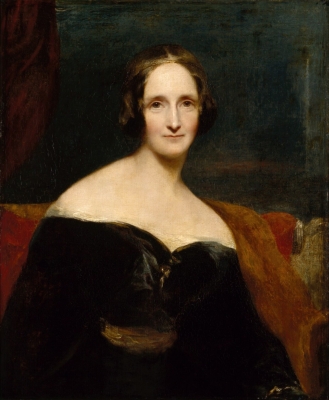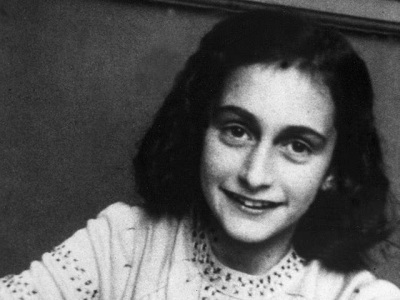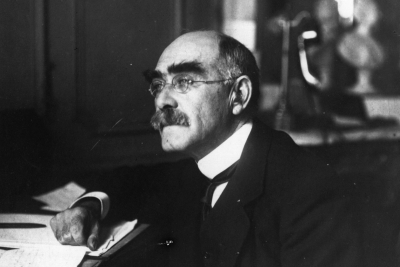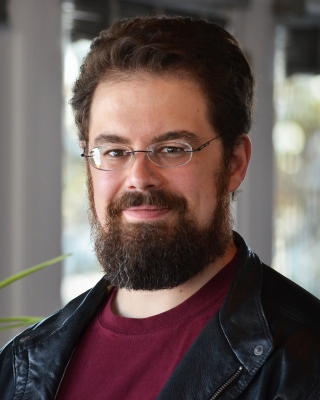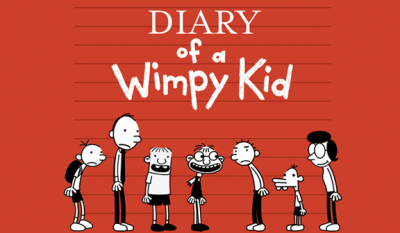Which are the children's favourite books which had an unexpected ending?
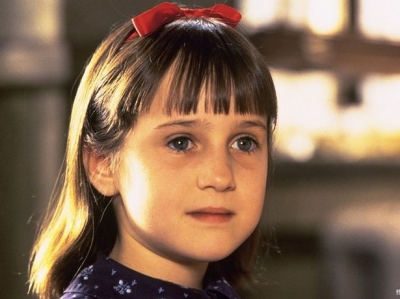
A poignant twist
I was shocked by the unexpected ending of the film The Boy in the Striped Pyjamas Directed by Mark Herman and produced by David Heyman and Rosie Alison, the film is about Bruno, the son of a commander of the Nazi army. The film opens with Bruno and his family moving to another place, as his father gets promoted and transferred. Near their new home, there is a Nazi concentration camp. Bruno, who is not aware of concentration camps, constantly asks his parents what those farms (concentration camps) are. They never tell him the truth One day Bruno escapes through the back door of the house, nuns through the forest and reaches the concentration camp, where he meets a Jewish boy named Schmuel. They meet every day and they soon become friends. But, one day, Bruno's mother decides to move the children to their aunt's house as she feels it's not right for the children to live so close to the concentration camp. Bruno tells Schmuel that he is leaving. An upset Schmuel says that his father is lost and Bruno decides to help him find his father. Bruno wears enters the camp. Unfortunately, the guards round up all the men in the camp and send them to the gas chamber. Bruno and Schmuel also end up in the gas chamber. The film ends with Bruno's family realising what happened. The film had a very unexpected ending, and I was truly shocked. I found this sentimental film to be an emotional roller coaster. It also contained some humorous scenes. It is t is one of the best films I have ever seen.
"Matilda"
One of the books I like with an unexpected ending is "Matilda" by Roald Dahl. Matilda is a five-year-old mathematics genius. She lives with her parents and younger brother. But her parents are selfish. They don't appreciate her talent. They hate her and only like their son. When Matilda goes to school, she meets a teacher named Miss. Honey, who is gentle and kind. She loved Matilda for her wonderful brain and immediately places her in the top form. It is fun to read about all of the activities Matilda does with her keen intelligence and her newly discovered powers of telekinesis. One day, Matilda sees her parents pack their bags and run away from the police. Surprisingly, Matilda refuses to leave with her parents and choses to stay with Miss. Honey. She adopts Matilda and they live happily in the red brick house.
The secret scientist
The ending of the Bollywood movie 3 Idiots, is completely unexpected. It shows the fun-loving but genius protagonist, Rancho in a completely different light. The realisation that the ingenious yet humble Ranchoddas Shamaldas Chanchad is the renowned scientist, Phunsukh Wangdu, with 400 patents to his credit, leaves us and his friends happy and dumbstruck. Earlier in the film, they meet the real Ranchoddas and threaten him into telling them the whereabouts of their college mate, Rancho/Phunsukh. During Rancho's college years, he teaches his friends so many life lessons in amusing ways. We are rooting for him throughout the film. The fact that he is a school teacher, who loves his job makes us happy but when the ending is revealed, his stupendous success gives us more joy.
From beyond the grave
(Massive spoilers for "And Then There Were None") If there's any book that pops into my head whenever unexpected endings are brought up, it's most certainly "And Then There Were None" by Agatha Christie. The book begins quite simply and ends spectacularly. Towards the end, there seems to be no clear conclusion in sight. It seems like that there's no way to unravel this mystery. However, the epilogue shows us the mind blowing, yet blatantly obvious answer. The killer was Justice Wargrave. The way Christie reveals the answer is gratifying.
And the last line, "Signed Lawrence Wargrave" is one of the most chilling lines I've ever read. The only other line even that comes remotely close is, of course: "And then there were none"
The wrong suspect
"Harry Potter and the Philosophers Stone" is one book which has an unexpected ending. Harry suspects that Professor Snape wants to steal the philosopher's stone to get the elixir of life. He also suspects that Snape enchanted his broom during the Quidditch game. But in the end, we find out that Professor Snape was actually trying to save Harry by uttering a counter curse during Quidditch, and Professor Quirrell was the one who was actually trying to harm Harry. Harry only learns the truth when he finds Quirrell before the Mirror of Erised. He never suspects Quirrell before and neither does the reader!
Rags to riches
An ending I would never forget is from the book "A Little Princess" by Frances Hodgson Burnett. The princess suddenly descends into poverty. The first question that popped up in my mind when I read the story was, "Will she survive? But I need not have worried. Her imagination becomes a weapon that helps her overcome the difficulties. Suddenly as quick as she became poor, she becomes prosperous again. I never expected this ending and it made me breathe a sigh of relief as I closed the book. It will always be my favourite book.
A sweet ending
I think that one book with an unexpected ending is "Charlie and the Chocolate Factory" by Roald Dahl. I know that many have written about unexpected sad endings, but I want to write about a happy ending. The book "Charlie and the Chocolate Factory" revolves around a poor young boy named Charlie Bucket, born to penniless, starving parents. He resides with both his paternal and maternal grandparents, who are bedridden. Along with Charlie's mother and father, they dwell in a dilapidated, tiny house. One day, Charlie gets a ticket to visit Mr. Willy Wonka's factory, and with his grandfather. Towards the end, Mr. Willy Wonka announces that Charlie will become his successor. This came as a surprise. Charlie will not only get to eat lots of sweets and chocolates throughout his life, but he will also own the chocolate factory. How nice!
Many twists and turns
I have read many books with unexpected ending, but one there is only one book which has shocked me four times!
Coincidentally it is the fourth novel in the "Wings of Fire" series by Tui T. Sutherland. Firstly, I was shocked to find that the Nightwings don't have any superpowers. The second time I was shocked was when I read t that the Nightwings weren't neutral and were planning to help Blister win the long war of Sandwing succession. I was shocked again when the scaredy Starflight took the decision to save his tribe from a catastrophic volcanic disaster. And finally, the most unexpected part was that the prophecy, which is the main topic of the series, is not true and was artificially created by the Nightwings. After reading the last part I was heartbroken.
When Death tells a story
"The Book Thief has an unexpected ending. Written by Markus Zusak, it is set during the time of World War II in Germany. The book chronicles the life of a blonde girl named Liesel Meminger, who is fond of reading books. Interspersed by humour and drama, it is a heart-breaking story. The book ends showing a rogue bomb falling on the Himmel Street, her neighbourhood killing everyone except Liesel, who was busy completing her manuscript. Though Liesel leads a happy life, her book is lost during the explosion, and Death who happens to be the narrator of the story returns to her at the time of her death.
Mystery on wheels
A book that had one of the most unexpected endings that I've ever read was "The Murder on the Orient Express". Although I would like to avoid any spoilers, this crime-mystery book by Agatha Christie had ending which you definitely wouldn't have seen coming. This story stars Chrisite's famous detective Hercule Poirot, who on a train to Istanbul in winter, discovers that an American millionaire with a shady past, John Ratchett has been murdered on board the train. He then begins his investigation. I never imagined that there could be more than one killer. Christie really keeps the reader on the edge as Poirot uncovers more and more possibilities, evidences and suspects. The murder of Ratchett is traced down to the kidnapping of a girl in America. This is not a short story, but a full-length novel. Despite this, Christie manages to make the book an exciting read with some red-herrings and false clues.
The other side of Snape
Throughout the "Harry Potter" series there is one truth that most fans agreed that Severus Snape was a negative character. Snape's character is constantly rude to Harry and he used to be a Death Eater, and ultimately even kills Dumbledore.
Anyways, a look inside Snape's memories in "The Deathly Hallow" reveals an entirely different side of Snape. Snape has been holding on to an unrequited love for Harry's mother, Lily. Having loved her since they were children, Snape's anger for Harry and ultimately his secret protection of him drew from his love for Lily.
This scene transforms Snape from a villain in to an anti-hero that fans never knew they wanted.
Witches and wit
The one book that had an unexpected ending was "The Witches" by Roald Dahl. This story starts with a boy who lives with his grandma in London after his parents die in a car accident. His grandma was an old witch-hunter who tells him a lot about witches.
They go on a holiday to Bournemouth. There, the boy sees the Grand High Witch as she meets with the witches from different countries He hears about their evil plans and tries to escape but is caught by the witch and turned into a mouse. But in the end he somehow kills the witches and stops their evil plans.
In this story, even though the protagonist turns into a mouse, he manages to fulfil his mission in a unique and funny way. I liked the way in which the author ends the story.
A surprise for Charlie
Who wouldn't want to become the owner of a chocolate factory? "Charlie and the Chocolate Factory" by Roald Dahl has an unexpected ending. The story is about a poor boy Charlie, who lives with his parents, maternal and paternal grandparents in a small cottage. Charlie, miraculously, along with four other children around the world, wins a "golden ticket" to tour the famous, secretive chocolatier Willy Wonka's chocolate factory. Wonka promises each child a lifetime supply of chocolates as a special gift. Throughout the story we are touched by Charlie's simplicity and honesty and these are traits that fascinate even Wonka. The unexpected ending occurs when Wonka sees a responsible friend in Charlie, and ends up handing the entire factory and his faithful workers, the Oompa Loompas over to him, as a successor.
Bittersweet
"The Postmaster" by Rabindranath Tagore has an unexpected ending. The story is set in the fictional Bengal village of Ulapur. It is about a postmaster and a little girl named Ratan who helps him with his household work. The two become close and the postmaster teaches Ratan to read. The postmaster also misses his family. He writes a letter to his seniors asking for a transfer. A few months later the postmasters request gets approved. That night he calls Ratan and tells her the news. Tears form in her eyes, but she holds them back. The next day the new postmaster arrives and the old one gets ready to leave. Ratan runs to him and begs him not to go. The postmaster explains everything to her, gets up and leaves. He never returns. I never expected the story to end like this. I thought the postmaster would return and it would be a happy ending. Yet it was the sudden twist that made the story remarkable.
The twist in the tale
Nothing thrills me more than watching a mystery an unexpected ending. One such movie, the stunning ending of which literally pulled-the-rug-out-from-under-me is an old Hindi suspense-thriller (1999) "Kaun?" directed by Ram Gopal Varma. The movie begins with woman, all alone at home, who has just heard the news about a murderer on-the-loose. The same day, she two oddly-behaving men visit the house and seek entry inside citing illogical reasons. She suspects one of them to be the murderer. The movie kept me on-the-edge as I too assumed that the visitor(s) had come with the intention to murder. At the end of the movie, to my utter surprise, the visitors get murdered instead. It is revealed that the woman herself is the killer and in fact not even the original resident of the house. She also had previously murdered the original house-owner and was waiting for her next prey. Even today, I shudder when I recollect the "unexpected" movie climax
An explosive ending
There's not much that can beat falling headfirst into a book, full of twists, turns and explosive plot points. It all builds up to a surprise or unexpected ending, one that if the writer has done her or his job correctly, will shock and make you flip back through the pages to see how you could have missed it coming. I respect writers, who can skillfully pace out a book so that the ending remains unpredictable and amazing. I also enjoy messy endings where everything is suddenly not what it seems. One book which I like or love to read is "The Murder of Roger Ackroyd" by Agatha Christie. Christie, is the grand ruler of twisted, shocking and downright unforgettable endings you never see coming. In this classic murder mystery, a man is murdered and more deaths follow which raise a lot of questions.
Full of blackmail, secrets and fascinating characters, this is Christie at her best. While this novel competes with many of her other novels in the surprise ending area. This classic mystery leaves a trail of dues, all of which are hidden so well, it's impossible to see where this book will end. I had to read the ending two times to believe it.
Picture Credit : Google
